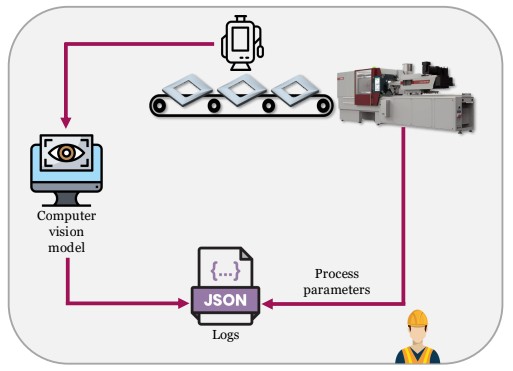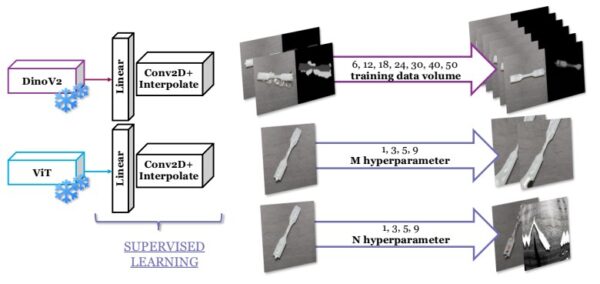Detecting Injection Molding Defects with Meta’s DINOv2

In a presentation at SPE ANTEC® 2025, researchers showed how Meta’s DINOv2 can optimize the detection of injection molding defects.
Self-supervised vision transformer models efficiently detect defects from injection molding before products leave the assembly line.
Quality assurance (QA) ensures that products meet the manufacturer’s high standards during injection molding. Surface defects like flash and sink marks can compromise product aesthetics and functionality. Experts usually perform defect detection using visual inspection, which is labor-intensive and prone to errors. The quality of detection is dependent on the operator, making it inconsistent. To promote efficiency, reduce waste, and decrease mistakes, researchers investigated how automation can streamline the QA process.
You can also read: Design-Related Surface Defects in Injection Molding.
Using New Technologies for Better Automation
Automatic detection systems are beneficial for many reasons. They allow for 24/7 monitoring during production, which is not always possible using traditional procedures. These systems can be the first line of defense from defects, allowing for reduced labor costs and standardized inspections. Additionally, these systems can keep logs and analyze defects in real time. Still, different systems have variations in effectiveness and require different datasets to begin working efficiently.

Logging and analyzing defects in real time can ensure manufacturers can quickly detect, understand, and mitigate equipment issues. Courtesy of A Self-Supervised Learning Framework for Automated Detection of Surface Defects in Injection Molding, presented at ANTEC® 2025.
As presented at ANTEC® 2025, researchers developed an automated detection system using Meta’s DINOv2 self-supervised vision transformer model. This state-of-the-art technology allows for depth estimation, semantic segmentation, and dense matching. With self-supervised learning, DINOv2 can learn from unlabeled images using a student-teacher model. This makes it a suitable candidate for computer vision in a QA environment. The algorithm is not reliant on large datasets of injection molding defects. Instead, it can adapt well on its own with minimal retraining.
A Combined Approach
In this study, researchers extracted computer vision images with DINOv2, then classified defects with a 2D convolution algorithm (Conv2D+ Interpolate). They compared the self-supervised model against Vision Transformer (ViT), a pre-trained, supervised model.

Researchers compared DINOv2, an unsupervised model, to ViT, a supervised model. Courtesy of A Self-Supervised Learning Framework for Automated Detection of Surface Defects in Injection Molding, presented at ANTEC® 2025.
When detecting sink marks, results showed more consistent accuracy and higher IoU scores using the DINOv2-based framework. Even with limited training data (i.e., 6-18 images), DINOv2 exhibited superior performance over the supervised model. Researchers found similar results when detecting flash defects, with stable performance after 6-24 images.
Researchers used the method RandAugment to apply transformations to images to gather additional insight into image analysis effectiveness. Using RandAugment can supplement the training of models on small datasets. In this study, it provided insights into the effects of geometry and color on defect detection:
- Geometry: Rotations, translations, and shearing simulate different perspectives. This can help detect flashes—the thin, sharp protrusions, which are often found along edges of injection molding products.
- Color: Adjusting brightness, contrast, and sharpening of images can highlight subtle differences in color. This is useful for detecting sink marks—surface depressions—that have subtle contrasts on products’ surfaces.
Combining DINOv2with Conv2D+ Interpolate showed robust detection under varying production conditions. Additionally, compared to supervised models, it did not require large, labeled datasets. Using this approach, manufacturers can reduce inspection time, monitor production in real-time, and produce less waste from defective products. Automation can also lower dependency on skilled operators during QA, while also keeping detailed production logs.
